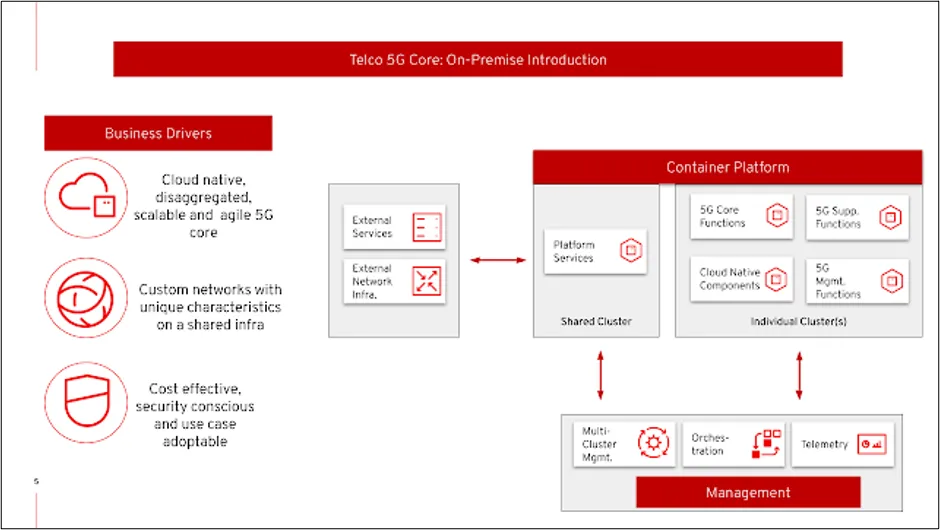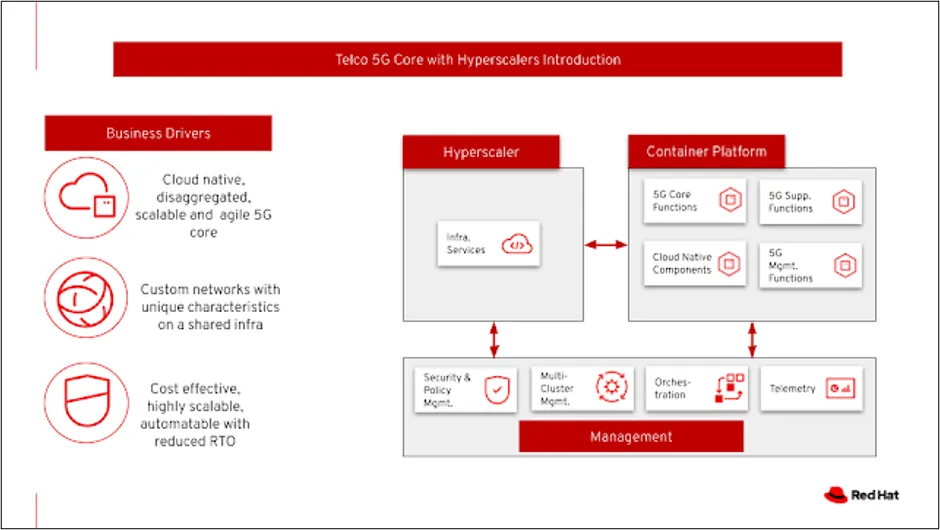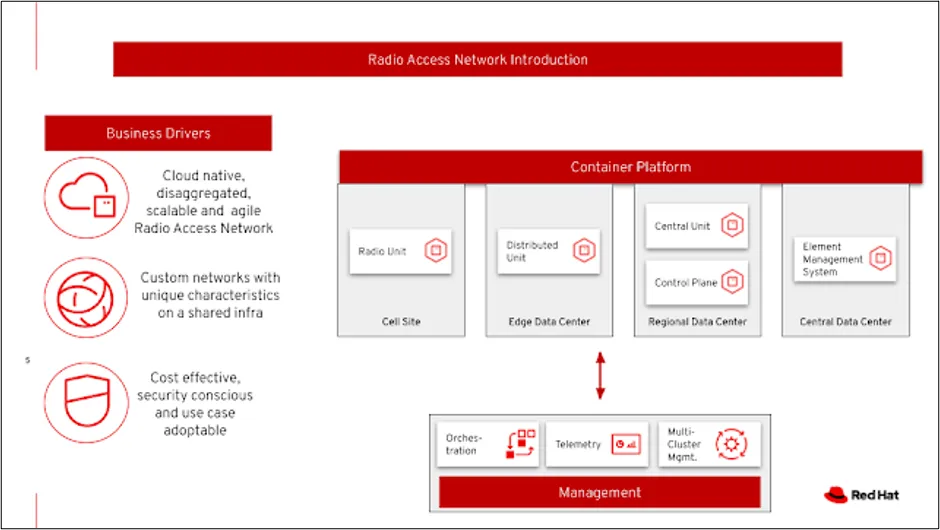Change means opportunity, and telecommunications service providers are accustomed to change. The rate of change is accelerating as 5G and edge move toward becoming the standard. New opportunities are available to those who have the speed to take advantage of them. An open source approach helps digital service providers respond to the demands of their customers.
For the past few years, Red Hat's Portfolio Architecture team has been developing reference architectures based on customers' real-world use cases in various industries. We have multiple criteria for developing and vetting an architecture collection before we publish it, which you can read about in my intro article about Portfolio Architectures.
We're publishing these architectures for anyone's use on our Red Hat Portfolio Architecture Center and Portfolio Architecture Examples repository.
This article centers around three architectures in the telecom domain. I'll provide a short overview of each and allow you to explore them in-depth on your own.

In each of these architectures' GitHub repository (linked in the architectures' descriptions), you'll find a table of contents outlining the technologies used, several example schematic diagrams with descriptions, and a link to open the diagrams directly into the online tooling in your browser.
[ Learn how to bring insights and data closer to customers with edge computing. ]
Telco 5G Core: on-premises
5G is the latest evolution of wireless mobile technology that aims to enable the delivery of highly immersive experiences for people and ultra-reliable, low-latency communication between devices. At the heart of each 5G network lies the 5G Core (5GC).

The Telco 5G Core: on-premises architecture conceives 5GC as a set of disaggregated, cloud-native applications that communicate internally and externally over well-defined standard interfaces. Each 5GC component is implemented as a container-based application and is referred to as a cloud-native network function (CNF).
The use case is ultra-reliable, immersive experiences for people and objects when and where it matters most.
[ Find out how to design an event-driven architecture for a hybrid cloud blueprint. ]
Telco 5G with hyperscalers
The Telco 5G with hyperscalers architecture describes a 5G solution built with open source technologies at the core that can work across any hyperscaler.

This use case builds an adaptable, on-demand infrastructure service for 5GC that can deliver across diverse use cases with minimal capital or operating expenditures.
Telco 5G: radio access networks
The Telco 5G: radio access network (RAN) architecture is designed for using 5G to deliver services from the network edge, such as:
- Enhanced mobile broadband (eMBB): 5G enhances data speeds and experiences with new radio capabilities like mmWave frequency spectrum for higher bandwidth allocation and theoretical throughput up to 20Gbps.
- Ultra-reliable, low-latency communication (uRLLC): 5G supports vertical industry requirements, including submillisecond latency with less than one lost packet in 105 packets.
- Massive machine-type communications (mMTC): 5G supports cost-efficient and robust connection for up to 1 million mMTC, NB-IOT, and LTE-M devices per square kilometer without network overloading.

The use case is based on the fact that the digital transformation of mobile networks is accelerating, and cloudification is increasing. Following the core network, RAN solutions are now taking advantage of the benefits of cloud computing.
Learn more
These are three of the many reference architectures Red Hat's Portfolio Architects have already published, and we'll continue to add more as we complete them. If you are interested in more architecture solutions like these, feel free to explore the Portfolio Architecture Examples repository.
This article originally appeared on Eric D. Schabell's blog and is republished with permission.
Sull'autore
Ricerca per canale
Automazione
Novità sull'automazione IT di tecnologie, team e ambienti
Intelligenza artificiale
Aggiornamenti sulle piattaforme che consentono alle aziende di eseguire carichi di lavoro IA ovunque
Hybrid cloud open source
Scopri come affrontare il futuro in modo più agile grazie al cloud ibrido
Sicurezza
Le ultime novità sulle nostre soluzioni per ridurre i rischi nelle tecnologie e negli ambienti
Edge computing
Aggiornamenti sulle piattaforme che semplificano l'operatività edge
Infrastruttura
Le ultime novità sulla piattaforma Linux aziendale leader a livello mondiale
Applicazioni
Approfondimenti sulle nostre soluzioni alle sfide applicative più difficili
Virtualizzazione
Il futuro della virtualizzazione negli ambienti aziendali per i carichi di lavoro on premise o nel cloud
